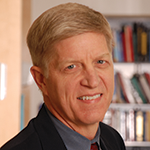Dr. Marshall may have had the mindset of a reality television show contestant, but his brazen act of self-experimentation succeeded in capturing the attention of the medical world.5 Over the next few years, other investigators confirmed their findings. Subsequent clinical trials confirmed the efficacy of triple therapy for H. pylori ulcer disease, thus fulfilling Koch’s fourth postulate. A significant cause of peptic ulcer disease could now be eradicated cheaply and efficiently.
It is truly amazing that Drs. Marshall and Warren were awarded the Nobel Prize in Physiology or Medicine in 2005. These two physicians were ordinary clinicians toiling in relative obscurity, with limited access to world-class research facilities. Perhaps the simple clinical observation made by one of them would have landed in the dustbin of outlandish medical theories had the other one not chosen to infect himself.
Pill
“Pill,” as friends and colleagues called him, was born in Johannesburg, South Africa, in 1908, the son of Lithuanian parents who immigrated to the United States the following year. A tall athletic young man, Louis Pillemer was recruited to play football at Ohio State University in Columbus, but left after failing his freshman year. He transferred to Duke University in Durham, N.C., graduated, and was accepted to its medical school. At the end of his second year, he scored the second highest grades in the country on the National Board exams.6 However, due to emotional problems, he was asked to leave medical school the following year. As my friend and colleague, William D. Ratnoff, MD, of Houston, Texas, noted in a review of Pill’s career, “Pillemer’s emotional problems waxed and waned throughout his life.”7 He subsequently moved to Case Western University in Cleveland, Ohio, to pursue a doctorate degree in immunology. A brilliant researcher, he was offered a faculty position after graduation. Within a few years, he led the first group of investigators to isolate and crystallize tetanus toxin and to correctly identify the purified protective antigen of pertussis.
Though these important accomplishments won him broad recognition, Pill was restless and seeking new challenges. He had always been intrigued by the nascent field of complement immunology and immersed himself in this area. Though some components of the classical pathway such as C1, C3, and C4 had been identified, Pill discovered a new protein, properdin, which directly activated C3. Over the next few years, he described the key roles of properdin in serving as a nonspecific defense mechanism and in activating the complement pathway in a nontraditional way.
